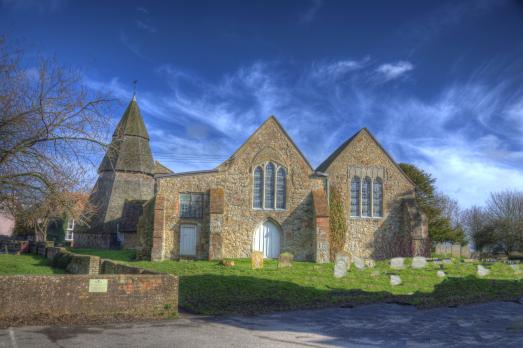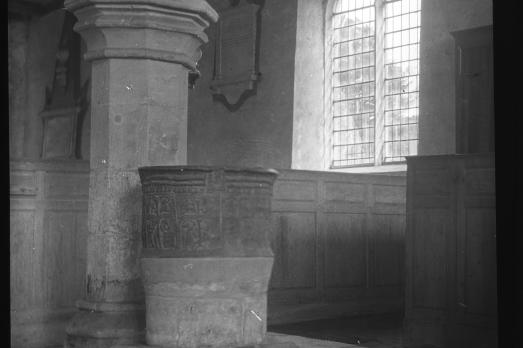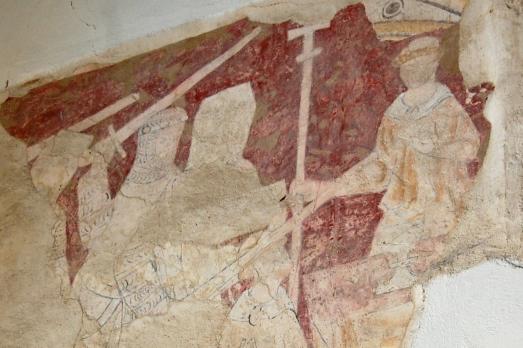When it was built in the 12th century its huge timbers were exposed, but in the 15th century the entire structure was covered in wooden cladding in three layers one on top of the other (like stacked cups) much increasing the height of the structure.
The church itself reveals why the tower was never intended to be attached to it: the nave arcades are at a tipsy angle, and were supported by internal buttresses as the church was built, showing that the builders were contending with unstable foundations from the start. Attaching a heavy tower to the body of the church would have made it even more unstable.
The church is entered through a disarmingly rural porch, complete with stable doors, to the right of which is a miniature clock tower with tiny battlements.
Inside, it is open, spacious and full of light. The nave has old seating, some of it still on the wooden platforms that raised the pews above the floor to keep damp and cold at bay. The box pews are the highest on the marsh.
The church contains many individual items of interest such as fragments of medieval glass, a 13th century wall painting, and memorials, but it is the lead font that is Brookland's special treasure. Made in the 1100s, it is one of only 30 such fonts in Britain. On it are two sets of scenes, one depicting the labours of the month such as scything, pruning, threshing and hunting and the other set showing the signs of the zodiac.
It is beautiful as well as very rare.





